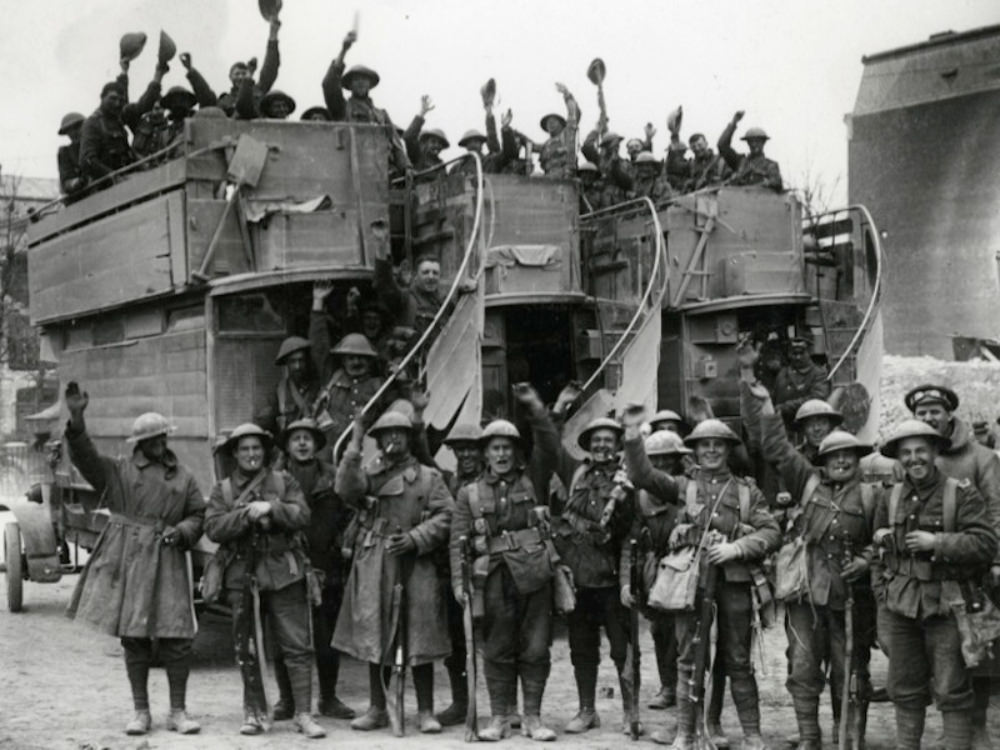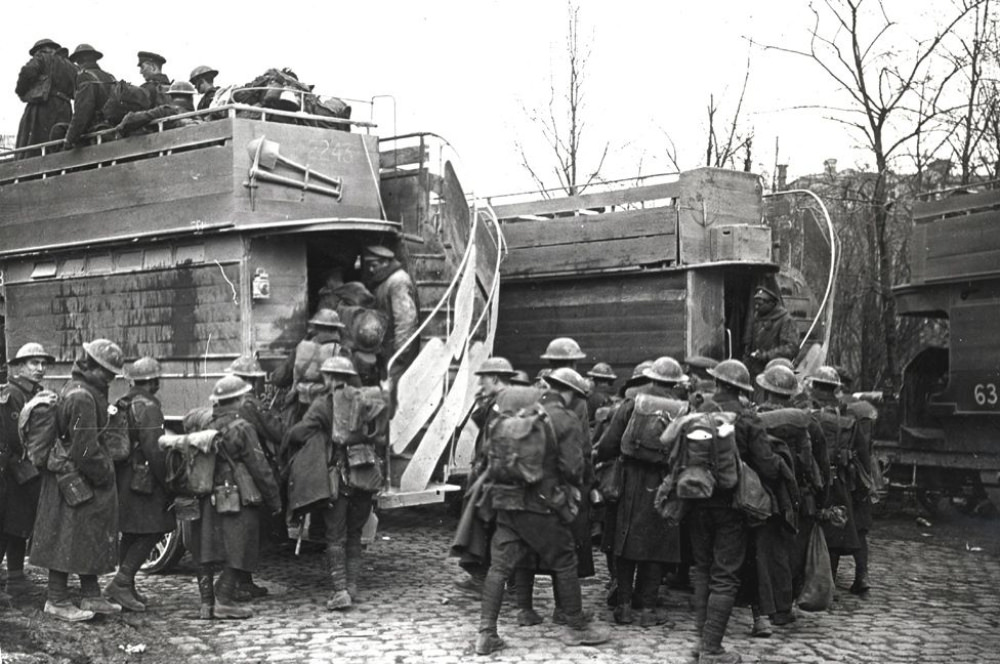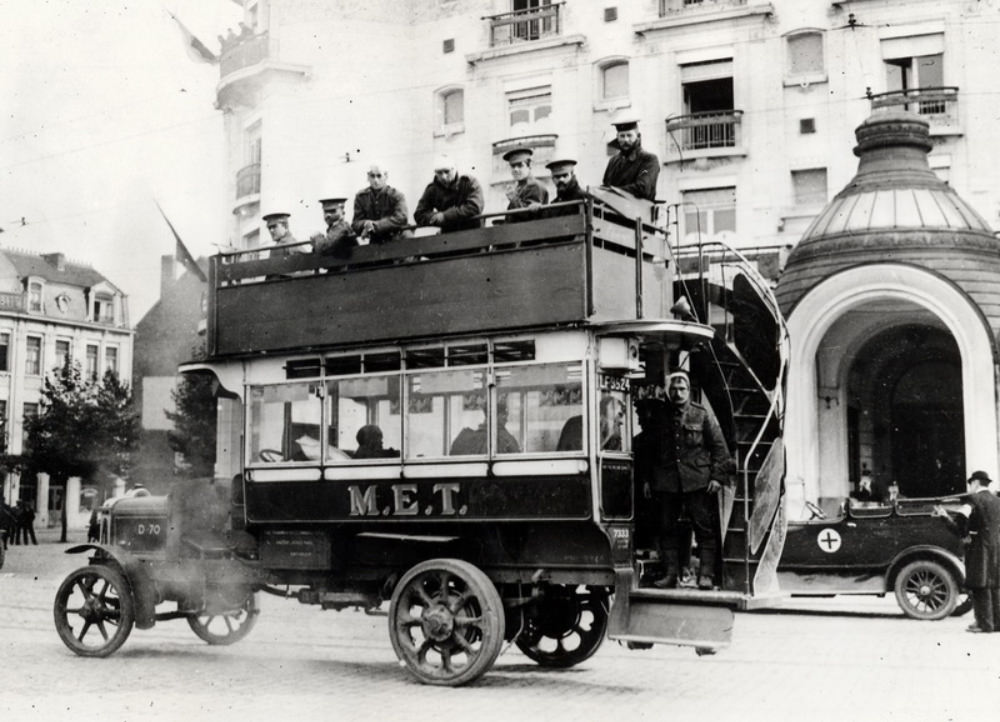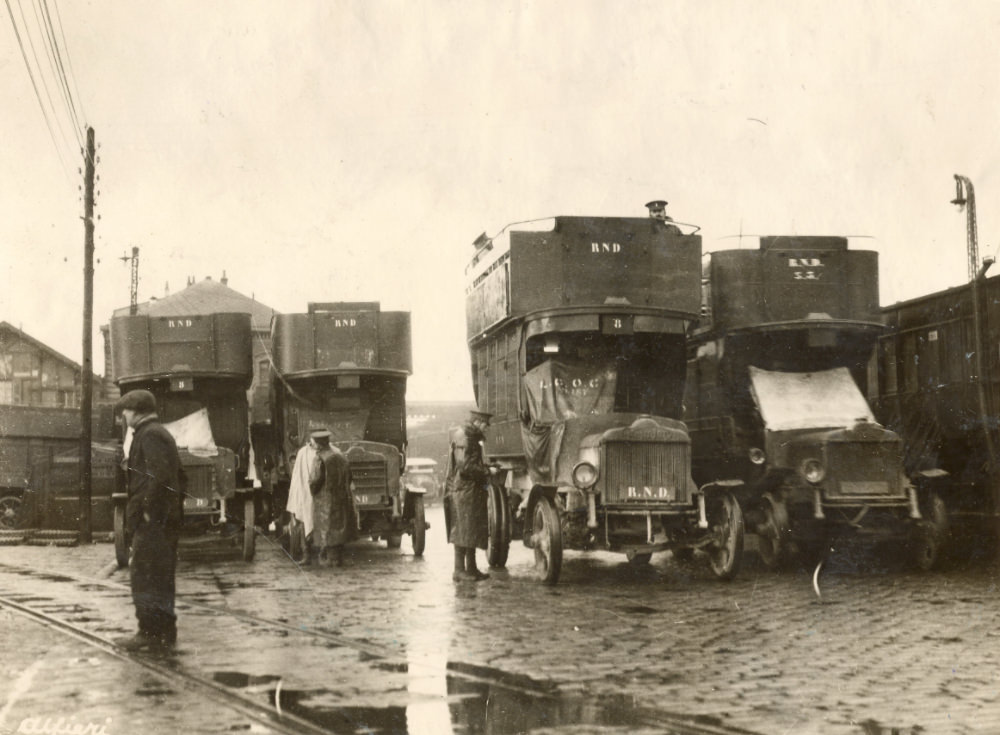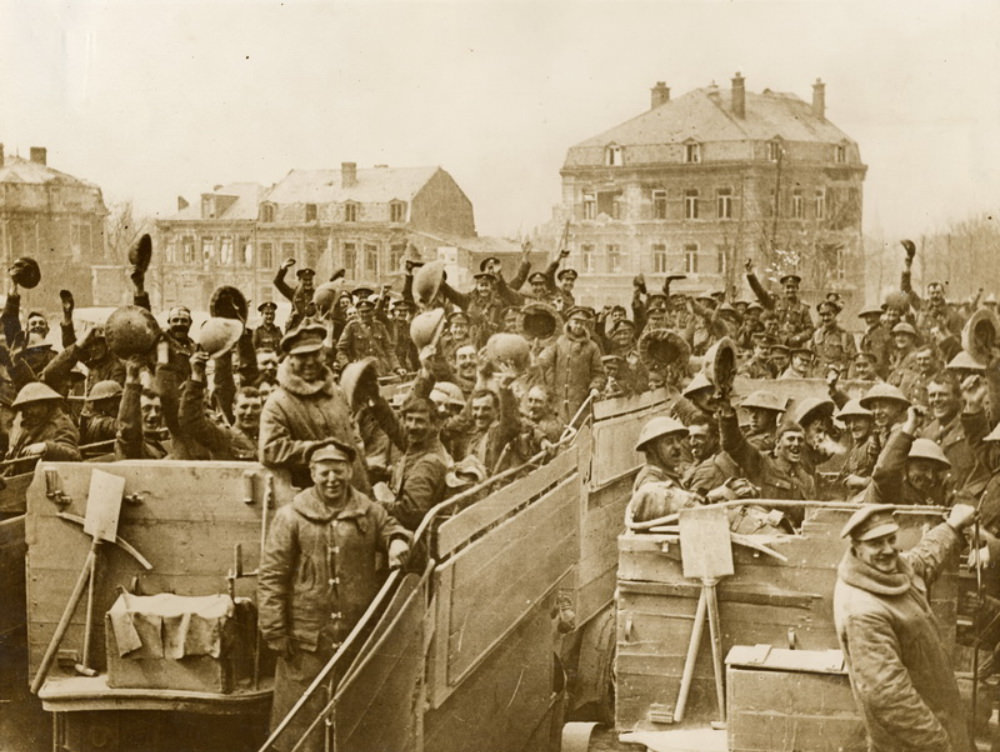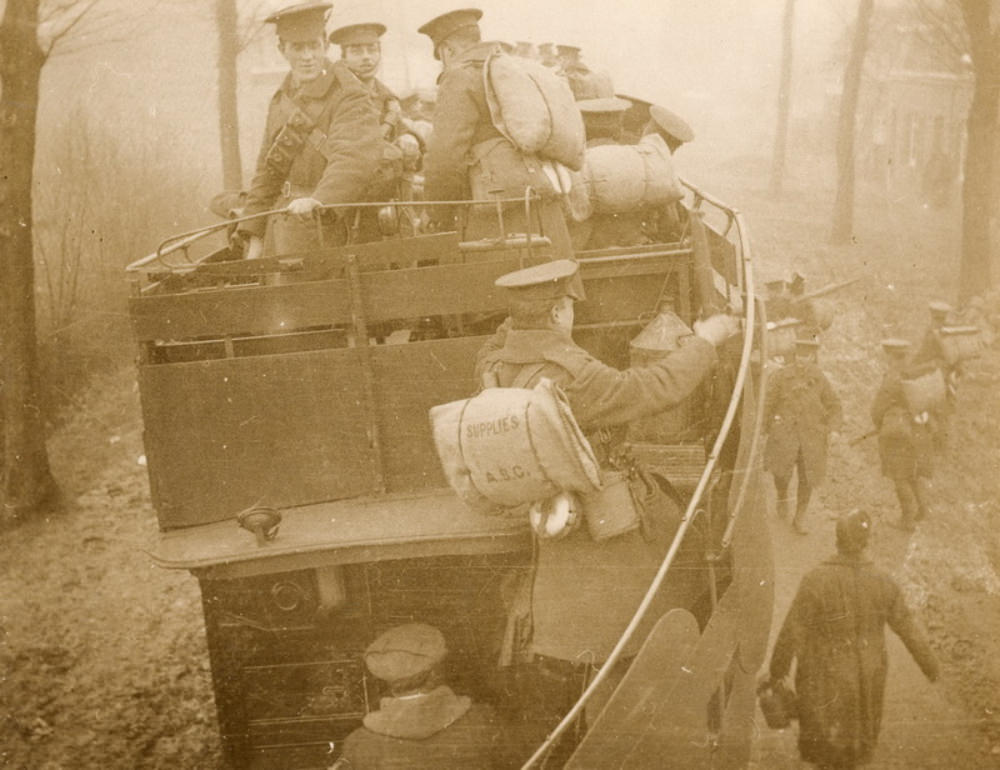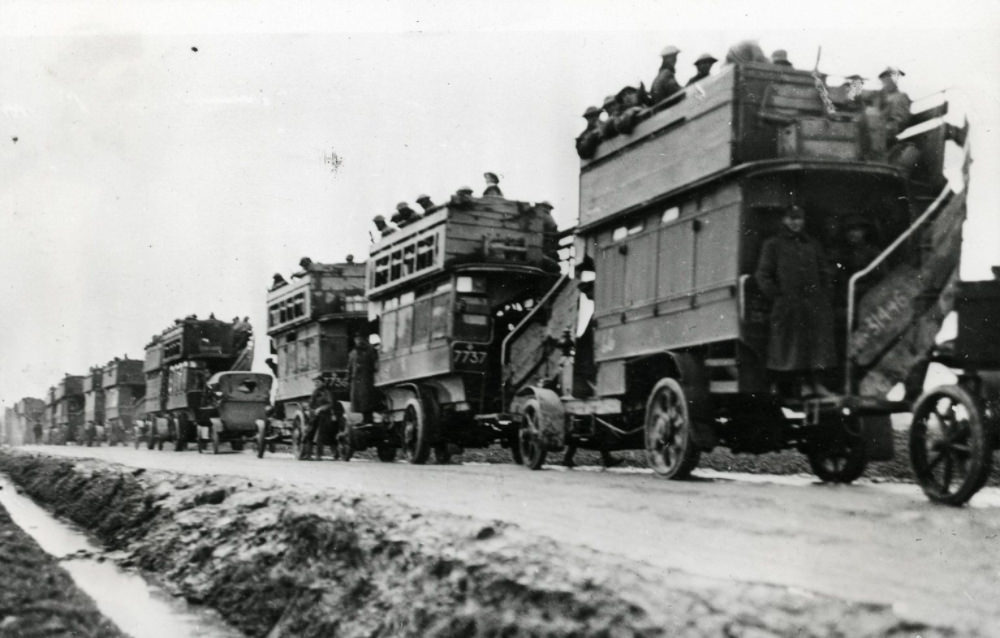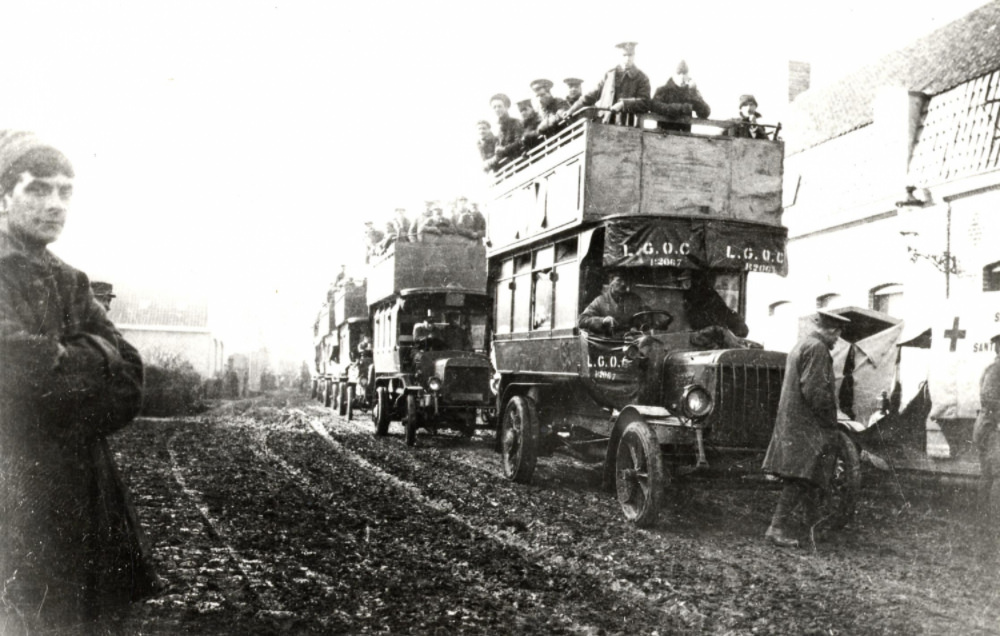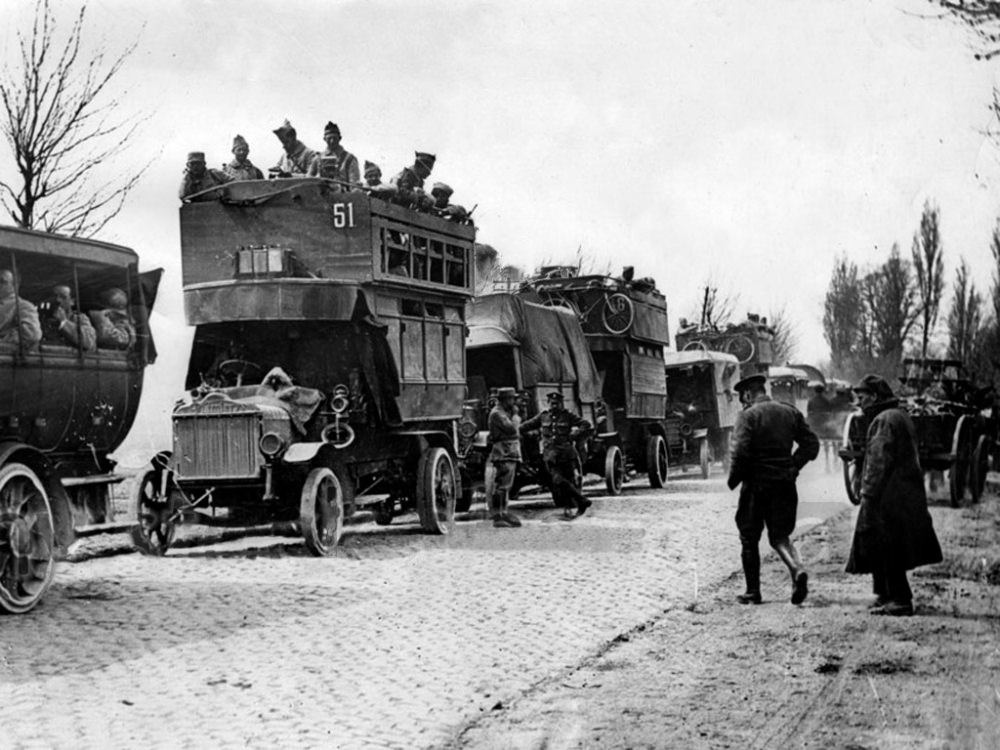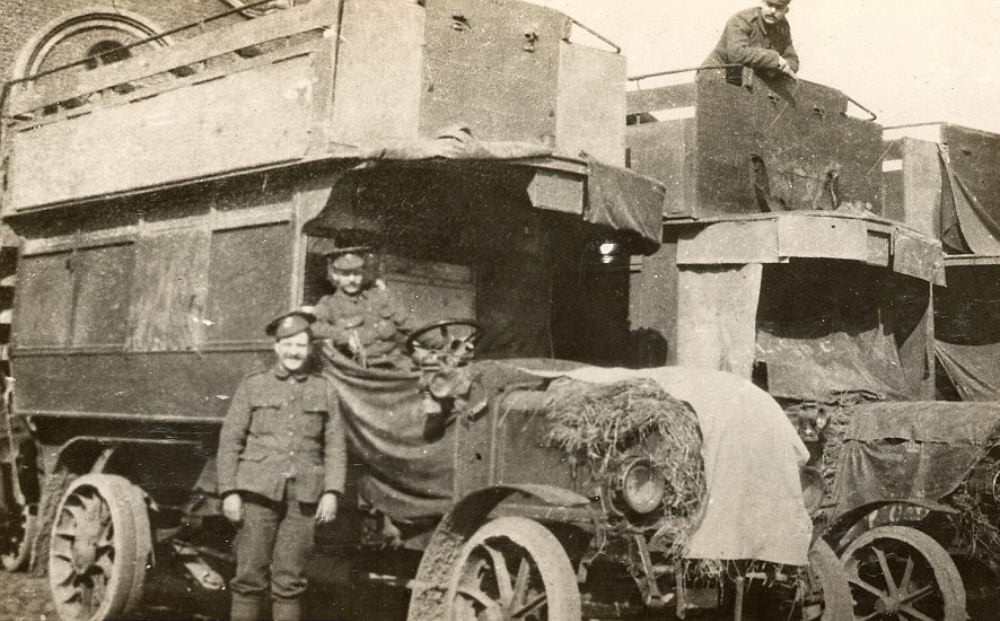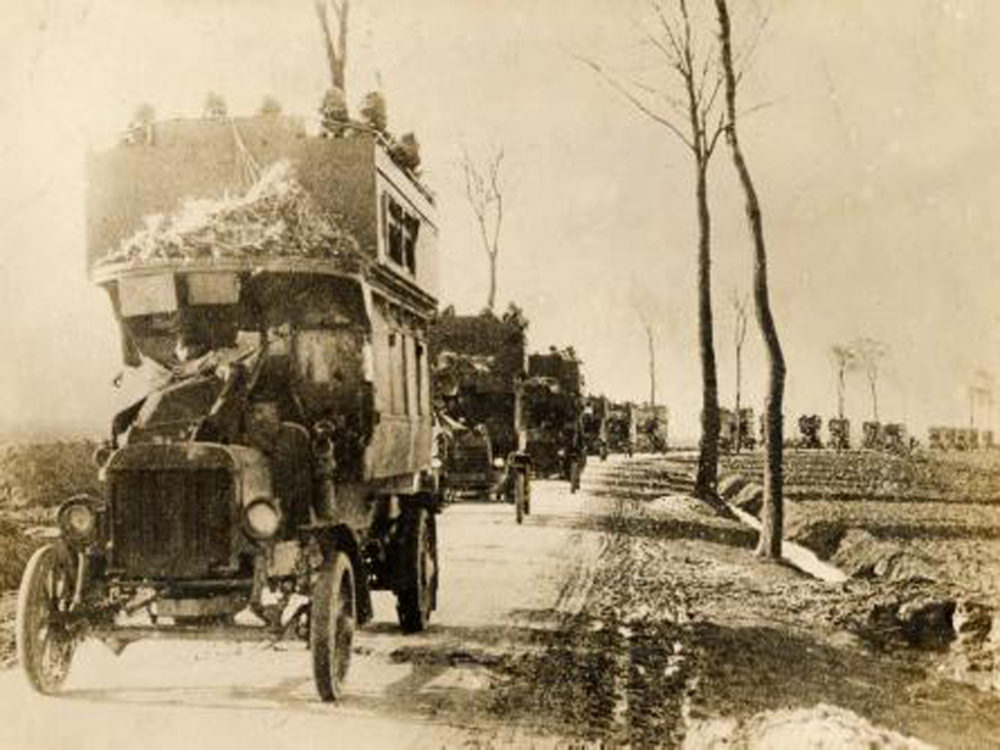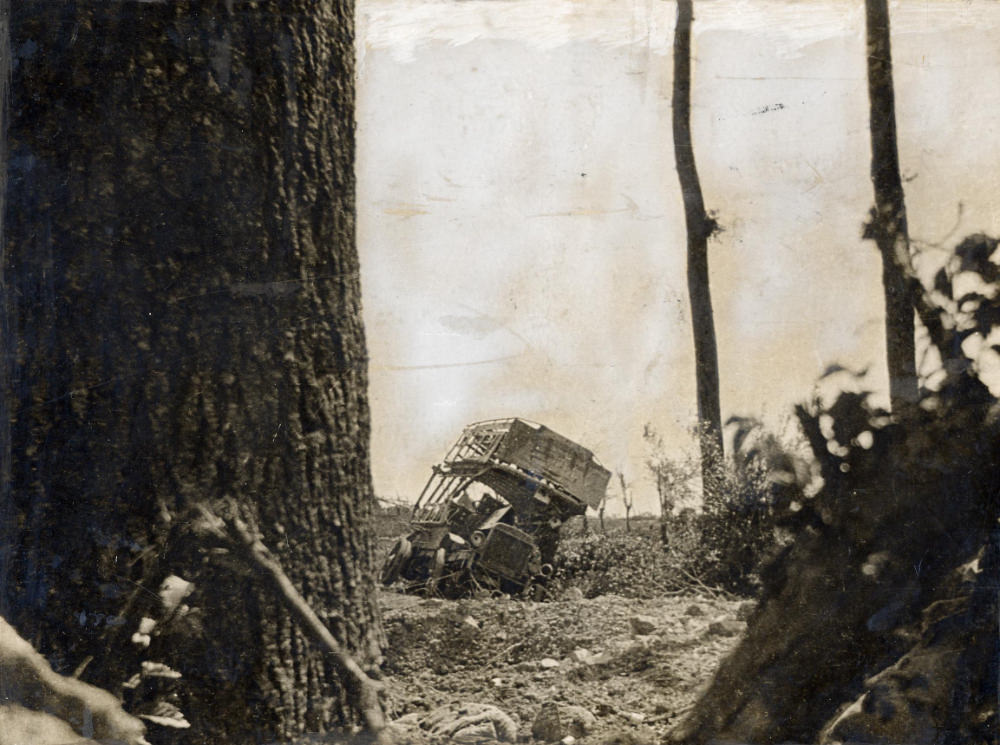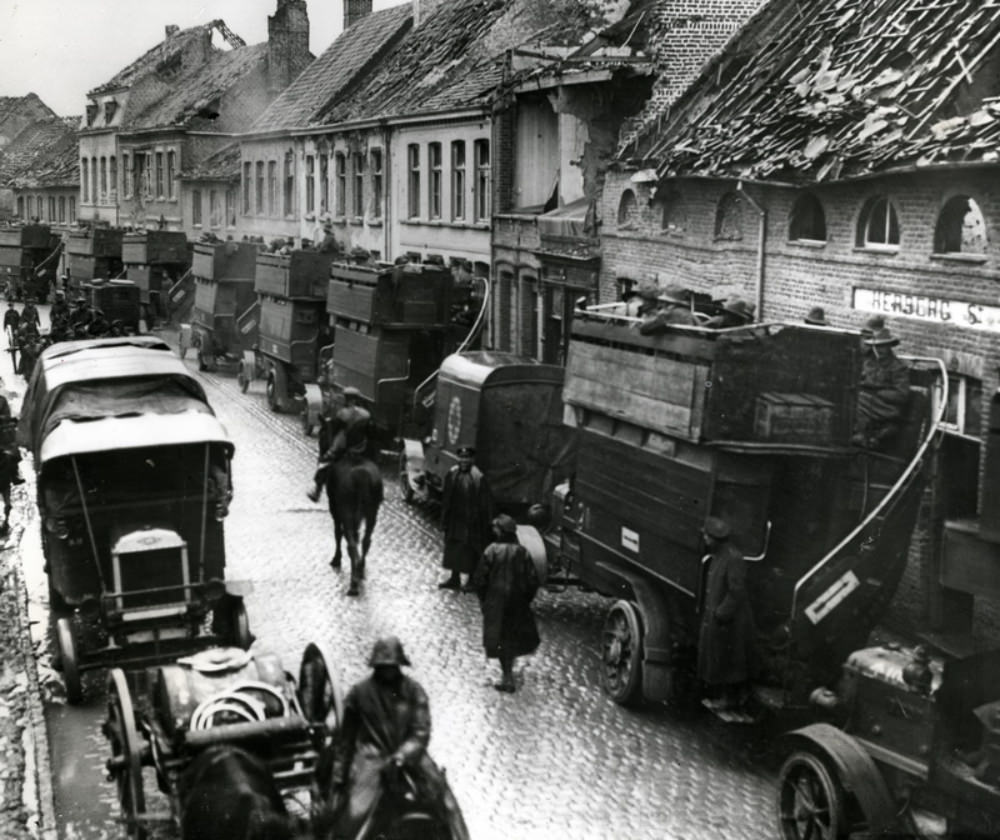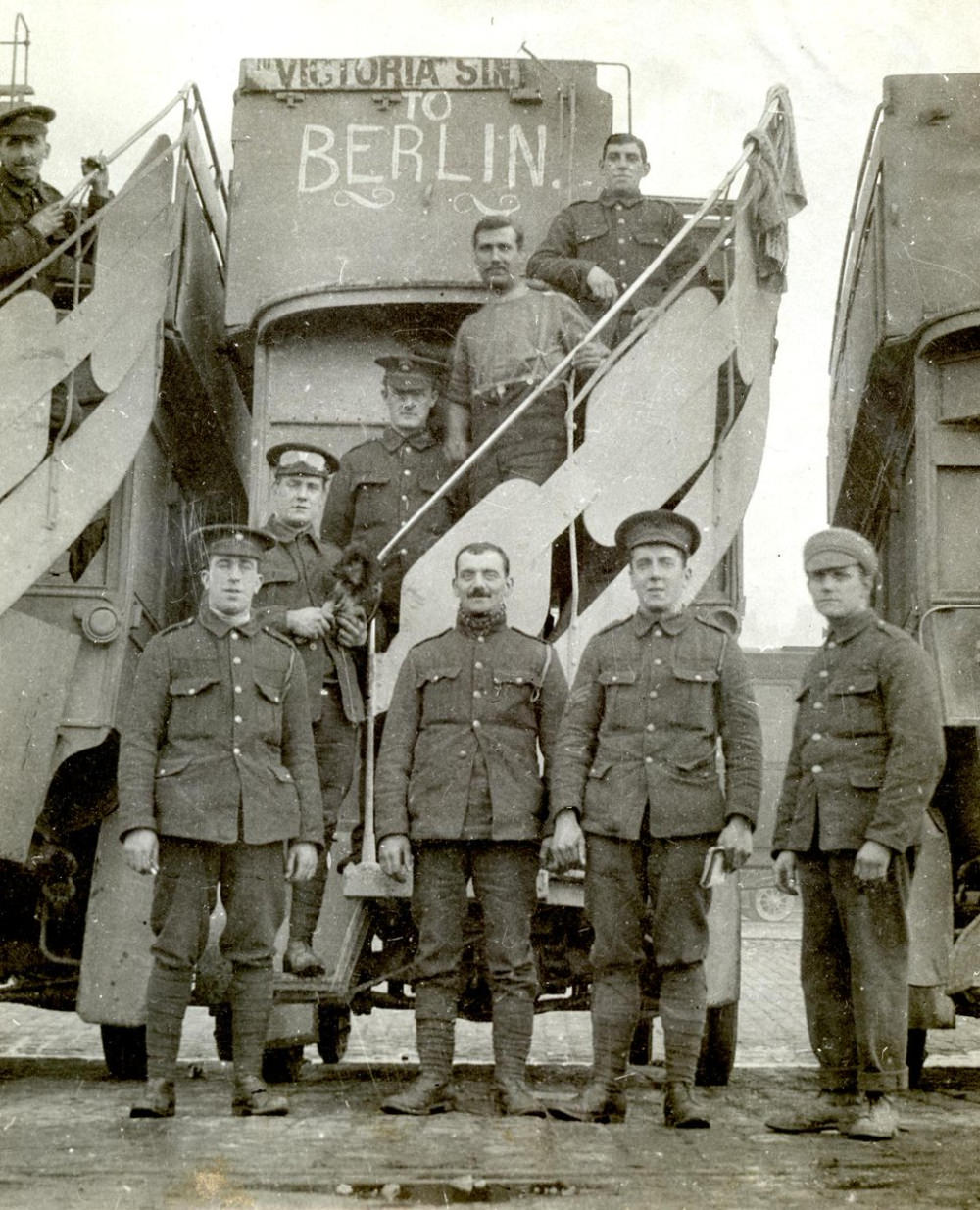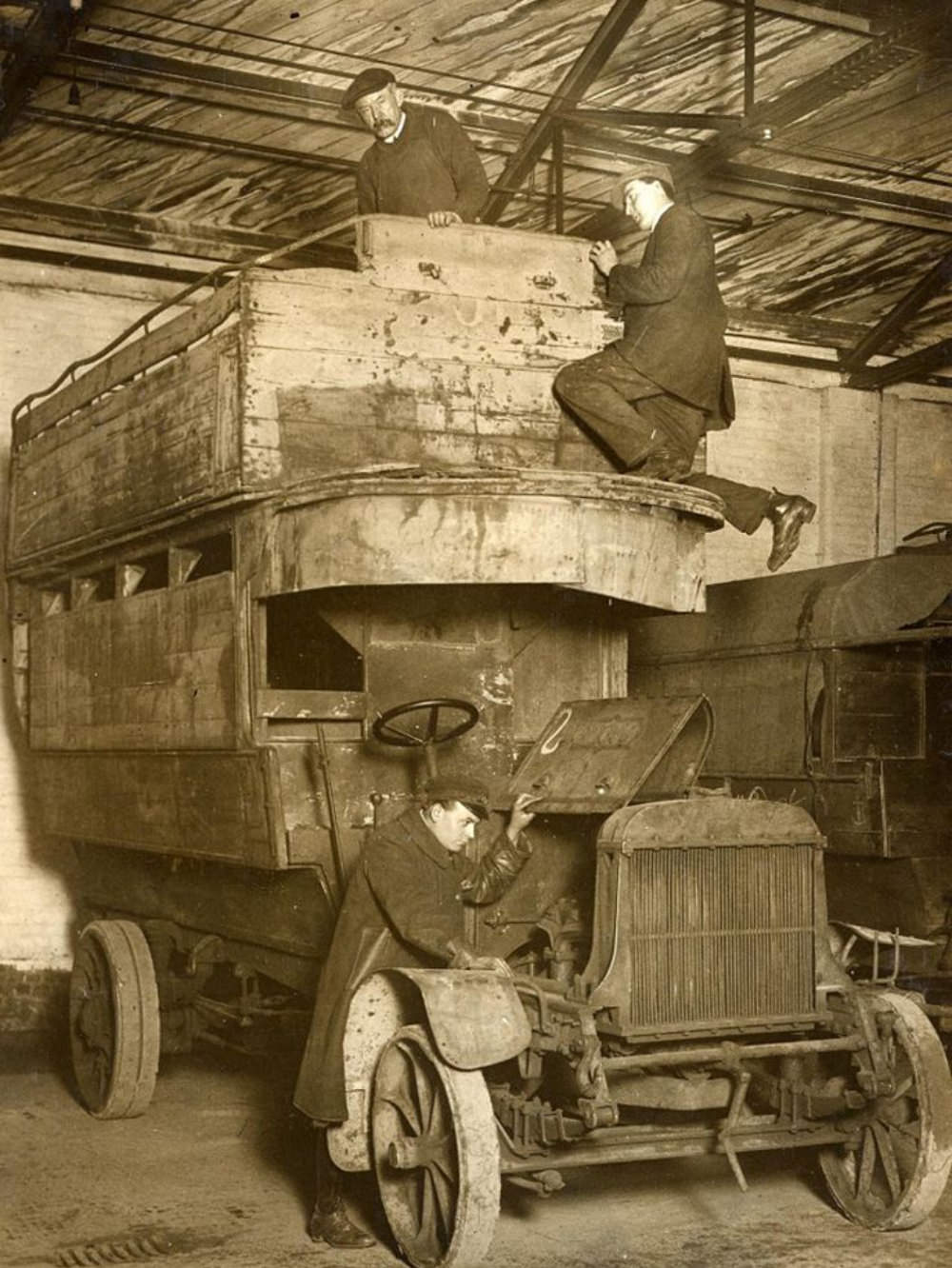The era of the horse bus came to an end with the outbreak of the First World War. The London General Omnibus Company (LGOC), London’s largest bus company, had retired all its horse-drawn vehicles in 1911 and 1912. Other bus companies continued to use horses until August 1914.
In particular, the LGOC B type bus, later manufactured by AEC, was a pleasant surprise for the War Department, thanks to its reliability. As their parts were interchangeable, roadside repairs became much easier. The War Department requisitioned more than a third of the LGOC’s fleet during the first few months of the war. These vehicles served in the British armed forces during World War II. The rest were shipped mainly to France and Belgium, although some even made their way to Greece from large commercial ports, such as Avonmouth. Due to their versatility, these motor buses were used for a variety of purposes. Many were converted into lorries, while others were used as mobile workshops, ambulances, and pigeon lofts.
Nevertheless, they were most commonly used to transport troops between the camps and the front lines. To ensure their safety, wooden planks were placed in the windows of troop carriers. In London, each bus could carry 34 passengers, but there were 25 soldiers on each bus. There were fewer seats on the top deck to prevent the bus from becoming too top-heavy in uneven terrain.


